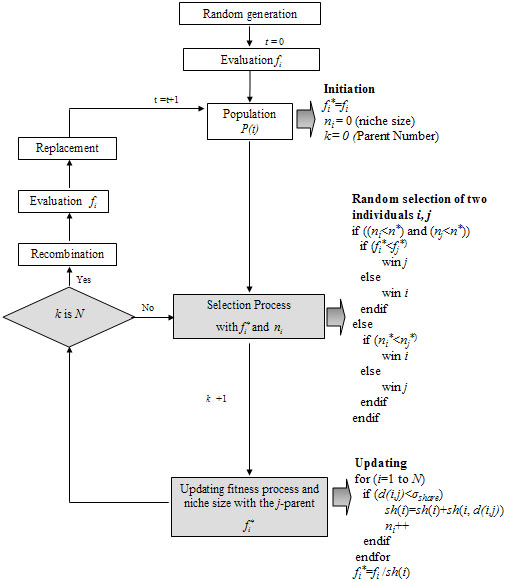|
Continuously
updated sharing (CUS) was developed to
overcome
FS restrictions.
The
process of penalization was modified by combining it
with a more appropriate selection (the tournament
selection). The
method is applied during the selection process in a continuous
way so that the result is observed father by father.
Instead of penalizing the present areas in the
starting population of each generation, those that
are being chosen during the selection are being
penalized. This way, the quality in the zones where
there are already various fathers selected, is
penalized restricting the possibility of their
individuals being elected again for the matting
pool.
To do
this, at the beginning, the original quality of the
solutions (fi) is used in the
selection of the first father, since there are not
any solutions in the matting pool. In the selection
process of the second father the fitness sharing is
now used, with the quality of all the solutions of
the population modified according to the proximity
to the selected father in the previous step. Thus,
the process will continue until the desired parents
are obtained. The accumulated value of the fitness
sharing of the solutions of the starting population
is updated in a continuous way each time a new
father is selected and according to the distance
between them, and it is used in an immediately in the
selection process.
The proposed selection system
besides the continuously updated sharing (CUS)
was the restricted binary tournament (RBT).
This method uses a parameter called size of maximum
niche (n*). If both solutions that compete in
the tournament belong to niches with a smaller size
than n*, the solution with a higher quality
will be the winner. If not, the one with a higher
risk to disappear will win.
This process is
shown in the following flowchart:

|

